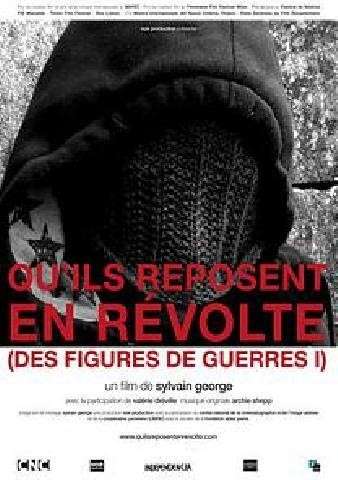Sidney J. Furie – Lady Sings the Blues [+ Commentary] (1972)


Lady Sings the Blues, like many enjoyable biopics, has little to do with presenting fact and everything to do with presenting the essence of a life. It has been both rightly and unfairly reviled by passionate fans of Holiday’s music as being highly fictionalized—and so it is, just as Amadeus, Funny Girl, and St. Louis Blues also use seeds of fact to grow fanciful tales of their respective subjects’ lives. It is also true that Diana Ross has little in common with Billie Holiday; their singing styles are markedly different, and Ross is far too slender and beautiful to believably imitate Holiday; to her credit, she does not try.
What she does do is turn in a remarkable performance, not necessarily as the Billie Holiday, but as “Billie Holiday,” the character created for Berry Gordy’s ambitious project, which unfortunately loses its identity along the way. The film is never sure what it wants to be, and the end result suffers for it, despite the critical acclaim heaped upon the film on its release. Lady Sings the Blues was nominated for five Academy Awards, including a nod for Ross herself as Best Actress, but lost in every category (she would, however, take home two Golden Globes).
Lady Sings the Blues wastes no time and pulls no punches; we are immediately thrust into a gritty black-and-white montage of Holiday being booked into a New York jail, set to the opening strains of Michel LeGrand’s apocalyptic score. The first few minutes of Ross’s performance as Holiday show her haggard, disheveled, manic—writhing in a straightjacket, confined to a padded cell, screaming inhumanly in the thrall of her addiction. From there, flashback scenes show us how she landed in such a sorry state, beginning with her rape by a drunk at the age of 14. It effectively sets the stage for what is to come. Director Sidney J. Furie brings the pain…by the truckload…but spends so little time exploring the mystique of Billie Holiday, the incredible spell that she cast by bringing so much emotion into her music and successfully transmitting it to her audience, that you wonder if he’d ever actually heard of her before taking on this project. Then again, a brief overview of Furie’s filmography—which includes the equally cliché-ridden and factually-challenged stinker Gable and Lombard—goes a long way towards perhaps explaining some of the choices made during this production.
The movie’s focus on soap-opera romance can further be attributed to Motown mogul Berry Gordy’s desire to create a hit, a blockbuster romance as a vehicle for Diana Ross. Back in the fifties, when the idea of a Holiday biopic had first been considered, both Lana Turner and Ava Gardner had been considered for the role; later, Dorothy Dandridge was set to star in a Holiday movie but died before the film could be made. Diahann Carroll, Cicely Tyson, and Lola Falana were all contenders for this role, but Gordy’s passion to make Diana Ross a movie star and create a film with a primarily black cast that would find crossover appeal eventually decided the course of the production: when the movie went over budget (at two million dollars, it was already the most expensive movie starring a black cast ever made), Gordy even raised the money to finish it himself. It was a risky move for everyone involved, but one that eventually paid off spectacularly. Although Holiday fans held firm to their displeasure (“She was fine when she was in the Supremes,” groused famed jazzman Rahsaan Roland Kirk, “but why did she have to go and ruin my Lady Day dreams?”), Lady Sings the Blues succeeded beyond all expectations, becoming a smash hit and a critical darling—”This was one of the great performances of 1972,” declared Roger Ebert. Of course, he was referring to Diana Ross, but he would have done as well to have noted the two other standout actors in the film, two stunning breakout performances: Richard Pryor’s incredible dramatic turn as the ill-fated and lovesick Piano Man, and Billy Dee Williams as he redefined urban cool as ultra-suave gambler Louis McKay, Holiday’s long-suffering love interest, earning him instant stardom as “the black Clark Gable.” Together, these three take what might otherwise have been a dreadfully predictable and boring mess and shape it into something watchable.
The DVD, at least, is certainly watchable—a good, crisp widescreen transfer combined with rich colors add up to a dazzling presentation; viewers have the choice of somewhat subdued but balanced 5.1 digital sound or the original mono, for those who like to kick it old-school. The deleted scenes aren’t very engaging (except for the one in which Billy Dee goes all Superfly on the drug-dealing bandleader), and the commentary is a little too self-congratulatory for my taste, but hey—considering everything that Gordy and Furie went through to get this puppy made, I guess they’ve earned that. And winding up the special features is a rather expansive “making of” retrospective documentary featurette.
~DVD Verdict



1.95GB | 2h 24m | 855×364 | mkv
https://nitro.download/view/D57A56421EB151A/Lady_Sings_the_Blues.mkv
Language(s):English
Subtitles:English


![Milos Forman - Amadeus [Director's Cut + Extras] (1984) Amadeus (1984)](https://worldscinema.org/wp-content/uploads/2019/02/Amadeus-1984-e1549107564881.jpg)


